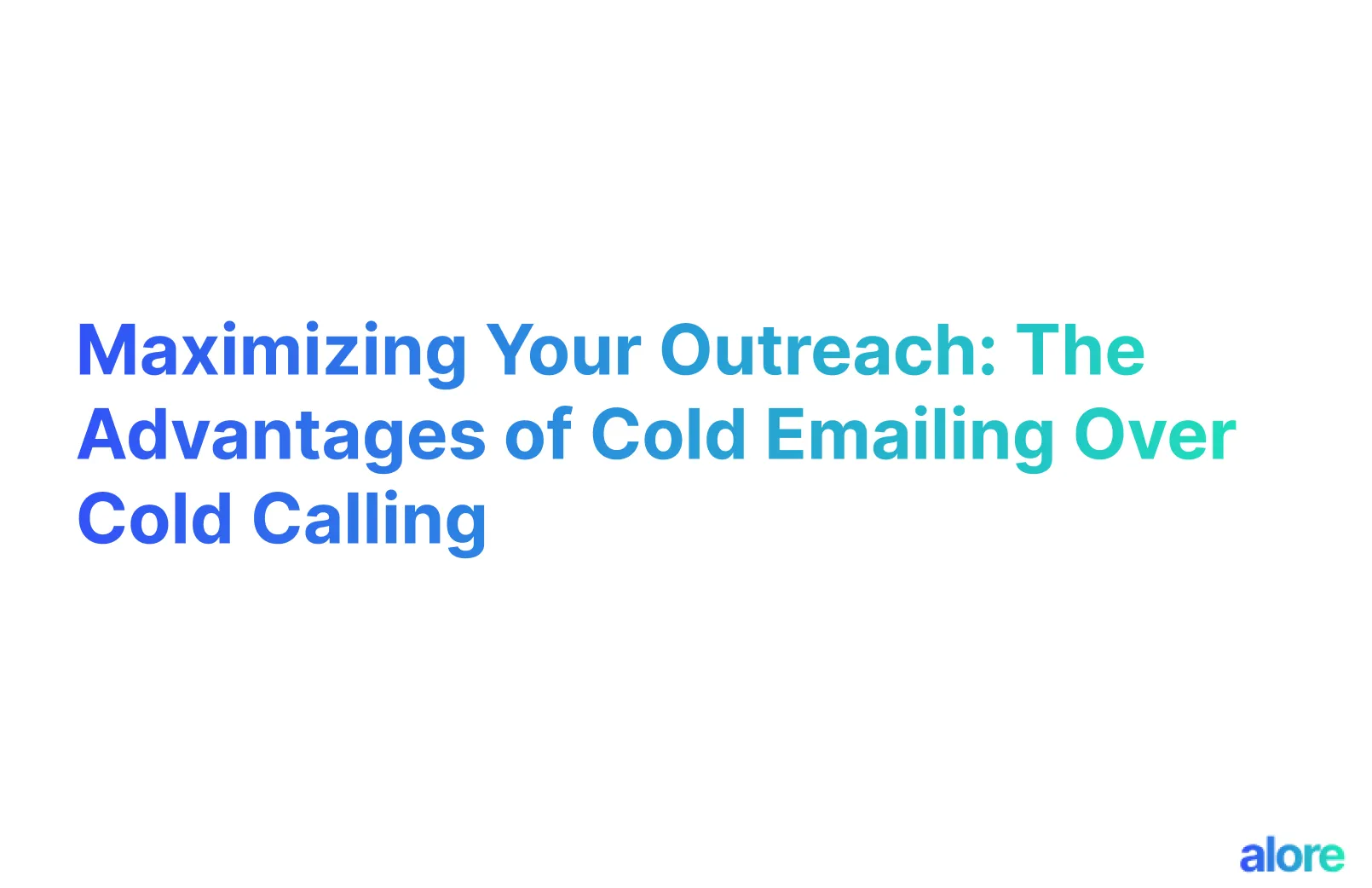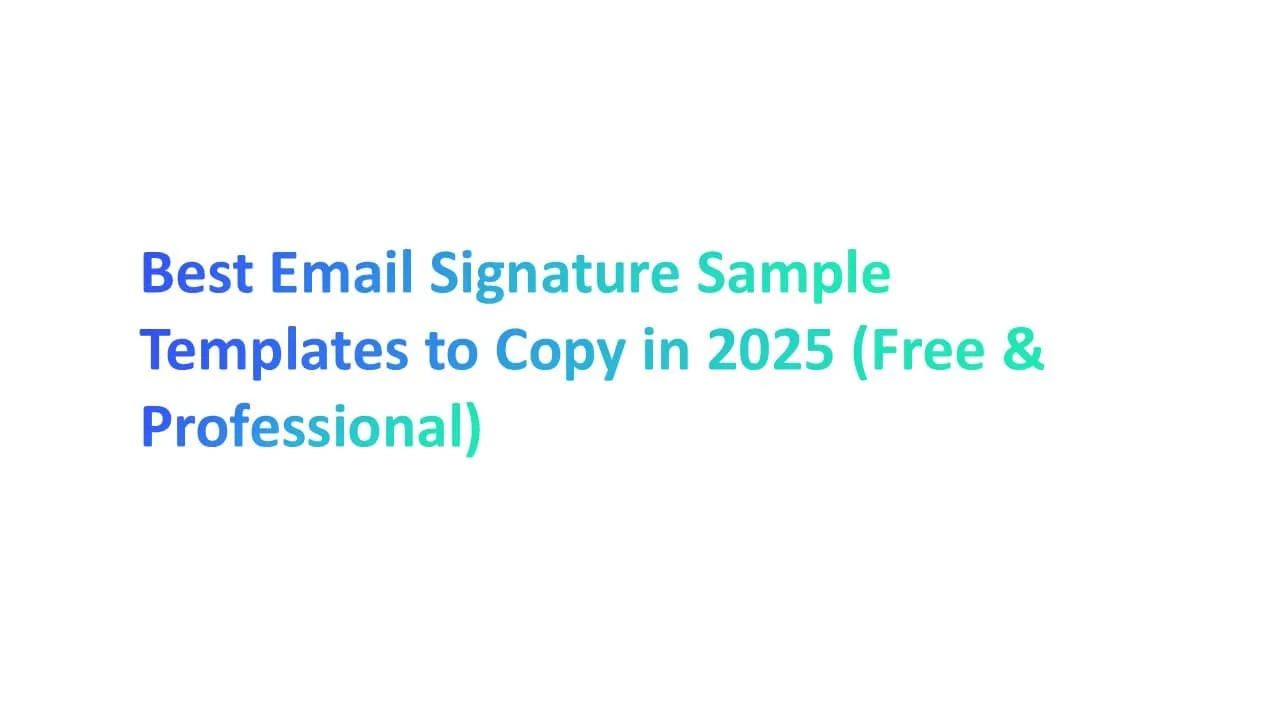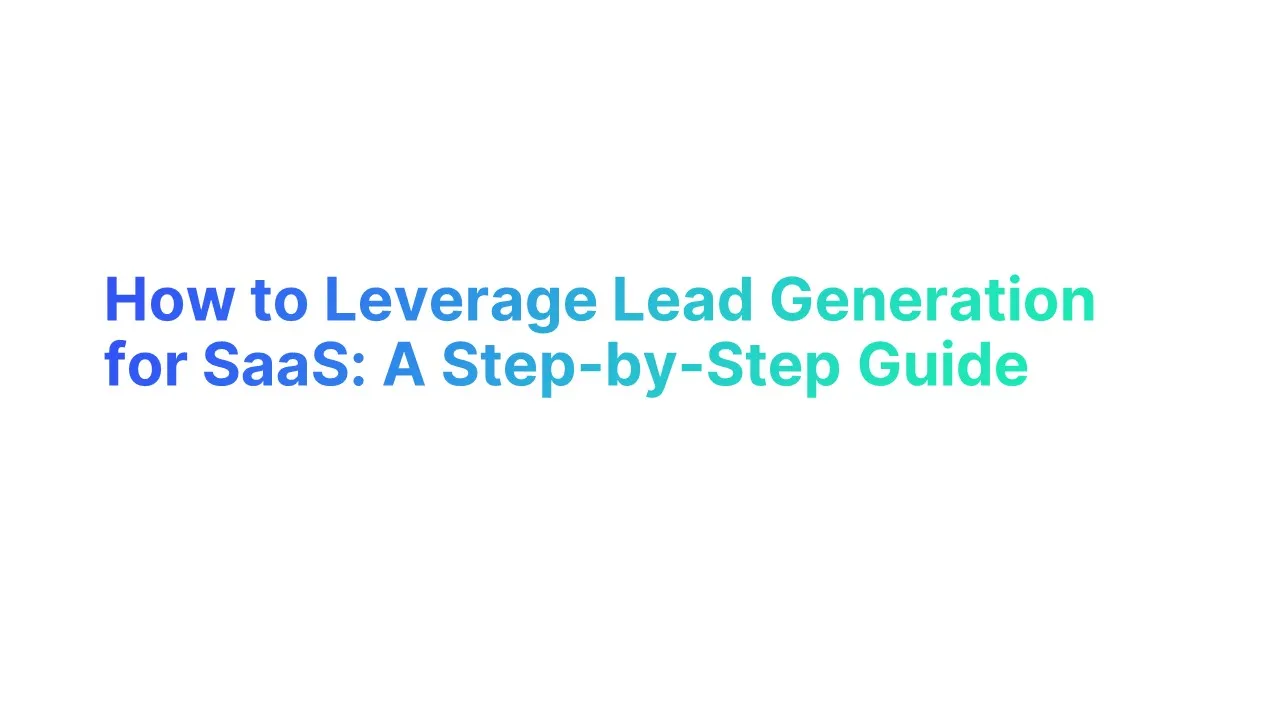Are you tired of cold calling prospects only to be continuously met with rejection? It's time to try a different approach - cold emailing. While the thought of crafting the perfect cold email may seem daunting, it can be a game-changer for your business. In this article, we'll explore the advantages of cold emailing over cold calling and provide you with expert tips and tricks for maximizing your outreach.
The Power of Cold Outreach: Cold Calling vs. Cold Emailing
Before diving into the advantages of cold emailing, it's essential to understand the difference between cold calling and cold emailing. Cold calling involves directly reaching out to prospects via phone, while cold emailing involves reaching out to prospects via email. While both methods have their advantages and disadvantages, cold emailing has proven to be a more effective approach for several reasons.
Pros and Cons of Cold Calling and Cold Emailing
Cold calling can be challenging as most prospects are unwilling to listen to a sales pitch over the phone, resulting in high rejection rates. Additionally, cold calling can be time-consuming, with sales teams often spending several hours making calls without any positive outcomes.
On the other hand, cold emailing allows you to reach more prospects in less time. Your sales team can craft personalized emails that speak directly to each prospect's pain points, making it more likely that the recipient will respond. Cold emailing also enables you to track open and response rates, giving you valuable insights into the effectiveness of your outreach campaigns.
For further reading - read our article "What are the 10 advantages of email?"
The Art of Crafting a Compelling Cold Email
While cold emailing has its advantages, it's essential to craft a compelling email that will capture the recipient's attention. The first step is to research your prospect thoroughly. Find out their pain points, interests, and needs. This information will help you craft a personalized email that speaks directly to their needs.
Next, focus on crafting a compelling subject line. The subject line should be attention-grabbing and relevant to the recipient. Avoid using generic subject lines like "Hello" or "Introduction." Instead, use subject lines that are specific and relevant to the recipient's needs.
When crafting the body of the email, keep it concise and to the point. Avoid using jargon or technical terms that the recipient may not understand. Instead, use simple language that is easy to understand. Use bullet points to break up the text and make it easier to read.
The Benefits of Personalization
Personalization is key to the success of cold emailing. When you personalize your email, you show the recipient that you have taken the time to understand their needs and interests. This can help build trust and credibility with the recipient, making it more likely that they will respond to your email.
Personalization can take many forms, from using the recipient's name in the email to referencing their company or industry. You can also personalize the email by including relevant content, such as a blog post or whitepaper, that speaks directly to the recipient's pain points.
The Importance of Follow-Up
Follow-up is critical to the success of cold emailing. Many recipients may not respond to your initial email, so it's essential to follow up with them. Follow-up emails should be personalized and focused on the recipient's needs. Avoid sending generic follow-up emails that do not address the recipient's pain points.
When following up, be persistent but not pushy. Send a follow-up email a few days after the initial email and then follow up again a week later. If the recipient still does not respond, it may be time to move on to another prospect.
Conclusion
Cold emailing is a powerful tool for reaching out to prospects and generating new business. By crafting personalized emails that speak directly to the recipient's pain points, you can increase the chances of a response. Remember to follow up with prospects and track your open and response rates to refine your outreach strategy over time.
Crafting the Perfect Cold Email: Essential Tips and Tricks
Crafting the perfect cold email can be a daunting task, but with the right tools and techniques, you can create an email that will get a response. Whether you're reaching out to a potential customer or trying to connect with a business partner, a well-crafted cold email can make all the difference. Here are some essential tips and tricks to help you write cold emails that will get a response:
How to Write a Cold Email That Will Get a Response
Writing a cold email that will get a response requires careful planning and execution. Here are some tips to help you get started:
- Start with a catchy subject line that grabs the recipient's attention. Your subject line should be short, sweet, and to the point. Avoid using generic subject lines like "Hello" or "Request for Meeting."
- Personalize the email by addressing the recipient by name. This shows that you have taken the time to research and understand who you are reaching out to.
- State the purpose of the email in the first sentence. Be clear and concise about why you are reaching out and what you hope to accomplish.
- Highlight the problem the prospect is facing and how your solution can help. Focus on the benefits of your product or service and how it can solve the recipient's pain points.
- Include social proof, such as customer testimonials, to build credibility. This can help establish trust and make the recipient more likely to respond.
- Keep the email concise, around 150-200 words. Avoid rambling or going off-topic.
- Close with a clear call to action. Be specific about what you want the recipient to do next, whether it's scheduling a meeting or checking out your website.
Boosting Your Sales Team's Performance with Cold Emailing
Cold emailing can be a powerful tool for boosting your sales team's performance. Here are some ways to integrate cold emailing into your sales strategy:
- Train your team on how to write effective cold emails. Provide them with templates and examples of successful emails to help guide their writing.
- Implement an email tracking system to measure open and response rates. This can help you identify which emails are working and which ones need improvement.
- Create customizable email templates to ensure consistency across all sales outreach. This can save time and ensure that your team is delivering a consistent message.
- Encourage your team to follow up multiple times to increase the likelihood of a response. Persistence can pay off when it comes to cold emailing.
25 Customizable Email Templates to Make Your Cold Emails Stand Out
If you're struggling to come up with the perfect cold email template, don't worry. There are plenty of templates available to help you get started. Here are 25 customizable templates to make your cold emails stand out:
- The Introduction Email: Use this template to introduce yourself and your company to a potential customer.
- The Personalized Email: Use this template to show that you have done your research and understand the recipient's needs.
- The Before-After-Bridge Email: Use this template to highlight the recipient's pain points and how your product or service can solve them.
- The Useful Content Email: Use this template to provide the recipient with valuable information or resources.
- The Mutual-Connection Email: Use this template to leverage a mutual connection or shared interest.
- The Social Media Email: Use this template to connect with the recipient on social media and build a relationship.
- The Competitor Email: Use this template to highlight the differences between your product or service and your competitors.
- The Results-Focused Email: Use this template to focus on the results that your product or service can deliver.
- The Demo Email: Use this template to offer a demo or free trial of your product or service.
With these tips and templates, you can craft the perfect cold email that will get a response and help you achieve your business goals.
7 Expert Tips for Converting Cold Emails into Sales
Making a sale from a cold email can be tough, but it's not impossible. Here are seven expert tips to help you convert cold emails into sales:
Mastering the Art of Being Concise in Your Cold Emails
When writing a cold email, it's essential to be concise as most prospects won't take the time to read a long email. Keep your email short, sweet, and to the point, highlighting the benefits of your solution.
It's important to remember that your prospect's time is valuable, and they likely receive numerous emails every day. By keeping your email brief and to the point, you increase the chances of them actually reading it and considering your offer.
Personalizing Your Cold Emails for Maximum Impact
Personalization is key to making a connection with your prospect. Use their name and reference any relevant information to them, such as recent industry news or a recent press release.
When you take the time to personalize your email, you show your prospect that you have done your research and are genuinely interested in their business. This can go a long way in building trust and establishing a relationship.
The Importance of Clean Email Lists in Cold Outreach
Before sending out your cold email campaign, ensure that your email list is clean and up-to-date. An old email list can lead to bounced emails, damaging your sender reputation and reducing the likelihood of a response.
It's crucial to regularly clean your email list to ensure that you are only reaching out to active and engaged prospects. This not only improves your chances of making a sale but also helps to maintain a positive reputation as a sender.
Keeping Your Cold Emails Interesting and Engaging
Make sure your cold email is engaging by including visual elements such as videos, images, and infographics.
Visual elements can help to break up the text and make your email more visually appealing. They can also help to convey your message more effectively and increase the chances of your email being read and remembered.
Crafting Compelling Subject Lines to Hook Your Readers
A subject line can make or break your cold email. Make sure it's attention-grabbing and relevant.
Your subject line is the first thing your prospect will see when they receive your email, so it's essential to make it count. A strong subject line can pique their interest and encourage them to open your email, while a weak or irrelevant subject line can lead to your email being deleted or ignored.
Opening Strong and Closing with Clear Calls to Action in Your Cold Emails
The opening and closing of your email are crucial. Make sure to open with a strong statement that resonates with the reader and end with a clear call to action.
Your opening statement should grab the reader's attention and make them want to keep reading. It should be relevant to their needs and highlight the benefits of your solution. Your closing should be clear and concise, with a specific call to action that encourages the prospect to take the next step.
The Power of Follow-Up in Cold Emailing
Don't be afraid to follow up with prospects who haven't responded to your initial email. A follow-up offers you a chance to re-engage and make a new connection.
Following up shows your prospect that you are persistent and genuinely interested in their business. It also gives them a gentle reminder of your offer and can help to keep you top of mind.
9 Highly Effective Cold Email Templates to Try Today
If you're looking to take your cold email game to the next level, try these nine highly effective cold email templates:
- Introduction Email: This type of email is perfect for introducing yourself and your business to a new prospect. Keep it short and sweet, and focus on what makes your company unique.
- Personalized Email: Personalization is key in cold emailing. Use the recipient's name and reference their company or industry to show that you've done your research.
- Before-After-Bridge Email: This type of email focuses on the pain points of your prospect and how your product or service can solve their problems.
- Useful Content Email: Share valuable content with your prospect, such as a blog post or whitepaper, to establish yourself as a thought leader in your industry.
- Mutual-Connection Email: If you have a mutual connection with your prospect, use this to your advantage. Mention the connection in your email to establish trust and credibility.
- Social Media Email: If your prospect is active on social media, use this as an opportunity to connect with them. Follow them on Twitter or LinkedIn and engage with their content before sending your cold email.
- Competitor Email: If you know your prospect is using a competitor's product or service, use this as an opportunity to highlight the benefits of switching to your company.
- Results-Focused Email: Focus on the results your product or service can deliver for your prospect. Use case studies or testimonials to show the value of your offering.
- Demo Email: Offer a free demo or trial of your product or service to entice your prospect to learn more.
Using these templates as a starting point, you can customize your cold emails to fit your unique business and audience. Remember to keep your emails concise, personalized, and focused on the value you can provide.
Cold emailing is an effective method for reaching new prospects and converting them into customers. However, it's important to remember that not every email will result in a sale. By following the tips and tricks outlined in this article, you can create compelling cold emails that resonate with your audience and maximize your outreach efforts.
Don't be discouraged by rejection or lack of response. Keep testing and refining your cold email strategy to find what works best for your business.








